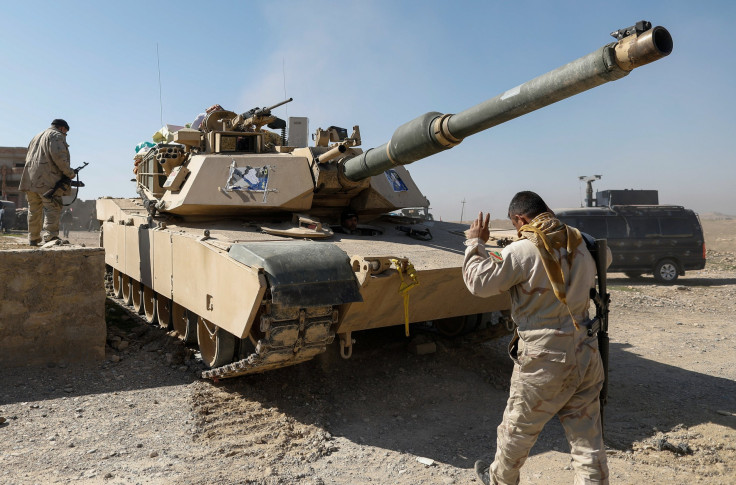Countries At War Right Now: US, Russia Lead List Of Nations Involved In Conflicts

War has been a frequent theme of President Donald Trump’s first month in the White House, from his war on the media to his talk of “nuclear holocaust” and putting Iran “on notice.” A group of Democrats moved Tuesday to try to limit Trump’s ability to start a war by calling for him to revoke a resolution that gives the president what they termed a “blank check” to launch military operations against those deemed responsible for the 9/11 terrorist attacks.
But even before Trump’s impact has been felt on the global stage, wars continue to rage around the world. Indeed, in 2016, there were only 10 countries free from armed conflict, according to the Global Peace Index, which has been produced by the Institute for Economics and Peace for the past decade.
Of course, the definition of a “war” can vary considerably. By most definitions, though, the United States is already involved in several. Below are 10 of the most notable current conflicts.
Afghanistan (2001-Present)
The U.S. launched its offensive in 2011 following 9/11 to oust the Taliban regime, which it accused of shielding al Qaeda. Already the longest war in U.S. history, the conflict is at a stalemate, with the U.S. commander in Afghanistan earlier this month requesting an increase in troop levels above the current 8,400.
Iraq (2003-Present)
While Saddam Hussein was toppled within weeks and the last troops were withdrawn by President Barack Obama in 2011, the U.S. remains heavily involved in the conflict in Iraq. Since 2014, airstrikes have been carried out and troops sent back to attempt to counter the Islamic State group.
Syria (2011-Present)
A bloody civil war that exploded into a melting pot of international conflict, the war in Syria also helped give rise to the growth of ISIS. The U.S., Russia, Turkey, Iran and France have all been major players.
Yemen (2015-Present)
Another Middle Eastern conflict in which the U.S. has been intimately involved, Yemen was the scene of Trump’s first, heavily criticized, counterterrorism mission last month. The U.S. has been aiding the Saudi Arabia-backed Arab coalition supporting Yemen’s president against the Iran-backed Houthi rebels.
Somalia (1991-Present)
Though some stability has been achieved with the swearing in five years ago of the country’s first formal Parliament since the outbreak of fighting, peace and security remain some way off. The U.S. continues to support the government and Kenya in attempting to counter the terrorist threat of al Qaeda and al-Shabab.
Nigeria (2009-Present)
Africa’s most populous country has been fighting an internal war to stymie the rise of the Boko Haram terrorist group. The group, which has links to ISIS, has captured large areas in the majority-Muslim north of Nigeria.
South Sudan (2013-Present)
While South Sudan broke away from Sudan in 2011, conflict in the world’s newest country has continued. More than 50,000 people have been killed and a further 1.6 million displaced since fighting broke out in 2013. The country Monday became the first in six years to declare a famine.
Ukraine (2014-Present)
Europe’s bloodiest conflict in two decades began with protests that led to the ouster of pro-Russian President Viktor Yanukovych. Soon, Russia annexed Crimea, an autonomous region of southern Ukraine and fighting continues in eastern Ukraine.
Libya (2011-Present)
An uprising as part of the Arab Spring in 2011 led to the ouster and death of Col. Moammar Gadhafi, with help from the U.S. and NATO allies. But the U.S. continues to be involved in strikes against ISIS fighters in the country.
India/Pakistan (2016-Present)
Hostilities over the disputed region of Kashmir have already been at the heart of two wars fought between India and Pakistan. Hostilities sparked again last September when India responded to an attack on an army base it blamed on militants from Pakistan by launching a strike on the Pakistani side of the divide. Fire has continued to be exchanged across the Line of Command that divides Kashmir.
© Copyright IBTimes 2024. All rights reserved.











